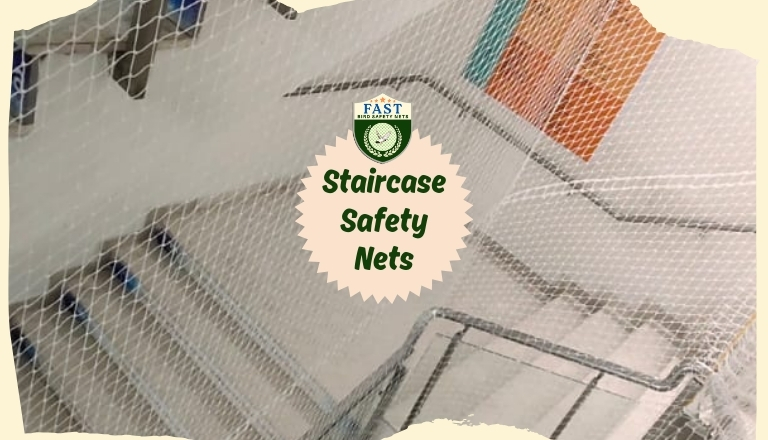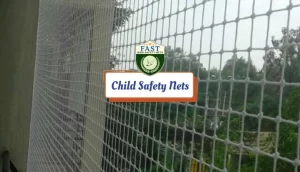Introduction: Staircases are integral parts of homes, providing access to different levels but also harbouring potential dangers, especially for young children and pets. Accidental falls on staircases can result in severe injuries, making staircase safety a paramount concern for families. Staircase safety nets offer a reliable solution, acting as a protective barrier to mitigate the risk of accidents. In this comprehensive guide, we’ll delve into why staircase safety nets are essential for safeguarding your loved ones and explore practical tips for their effective implementation.
1. Understanding the Risks:
Child Safety Concerns: For toddlers and young children, staircases can be enticing yet treacherous playgrounds. Their curious nature and developing motor skills make them susceptible to slips, trips, and falls, potentially leading to serious injuries.
Pet Safety Risks: Similarly, pets, especially smaller breeds or aging animals, face hazards on staircases. Reduced agility or vision impairment can increase their vulnerability to accidents, making staircase safety measures crucial for their well-being.
2. The Importance of Safety Nets:
Effective Barrier: Staircase safety nets serve as a formidable barrier, restricting access to staircases when supervision is unavailable. By creating a physical obstruction, safety nets prevent children and pets from ascending or descending the stairs unsupervised, reducing the likelihood of accidents.
Peace of Mind: The installation of staircase safety nets provides reassurance to parents and pet owners, alleviating concerns about potential staircase-related accidents. Knowing that a protective barrier is in place offers peace of mind, allowing families to navigate their homes with confidence.

3. Choosing the Right Safety Nets:
Quality Materials: Prioritize safety nets crafted from durable materials like high-strength nylon or polyethylene. These materials ensure resilience against wear and tear, maintaining the integrity of the safety barrier over time.
Proper Sizing: Accurate measurement of your staircase dimensions is crucial for selecting appropriately sized safety nets. A snug fit without gaps is essential to effectively block access to the staircase, minimizing the risk of accidents.
4. Installation Tips:
Secure Attachment: Utilize robust fastening methods, such as screws or hooks, to securely attach safety nets to the staircase structure. A secure attachment prevents accidental dislodging and ensures the continuous efficacy of the safety barrier.
Professional Installation: While DIY installation is an option, enlisting the expertise of professionals can guarantee proper fitting and adherence to safety standards. Professional installers possess the knowledge and experience to navigate complex staircase configurations, ensuring optimal protection.
5. Maintenance and Usage:
Regular Inspections: Implement a routine inspection schedule to assess the condition of safety nets regularly. Look for signs of damage, such as tears or fraying, and promptly address any issues to maintain the nets’ effectiveness.
Supervision: Despite the presence of safety nets, adult supervision remains paramount, especially for young children or pets prone to exploration. Vigilant supervision minimizes the risk of accidents and enhances overall safety within the home.
Conclusion: Staircase safety nets are indispensable safeguards, providing essential protection against staircase-related accidents for children and pets. By understanding the inherent risks, selecting high-quality safety nets, and ensuring proper installation and maintenance, families can create a safer environment within their homes. Fast Safety Nets offers expert solutions to fortify your staircase safety, ensuring unparalleled peace of mind for you and your loved ones.






